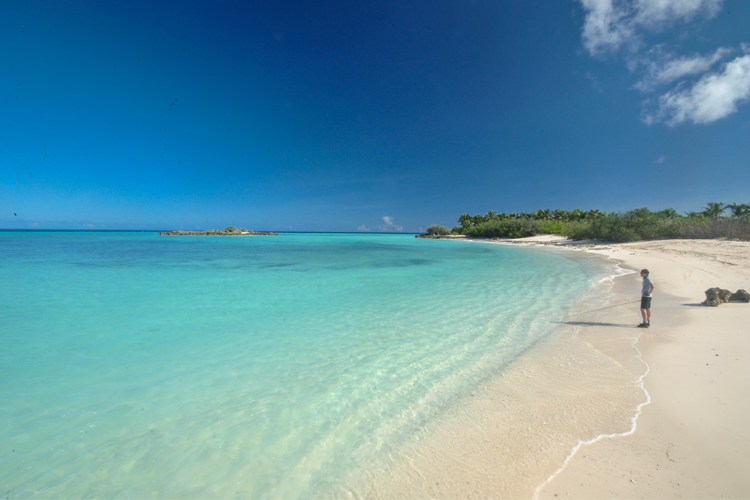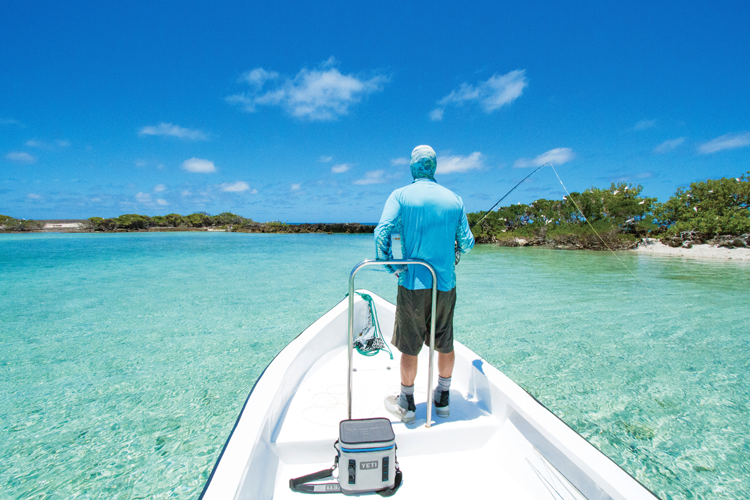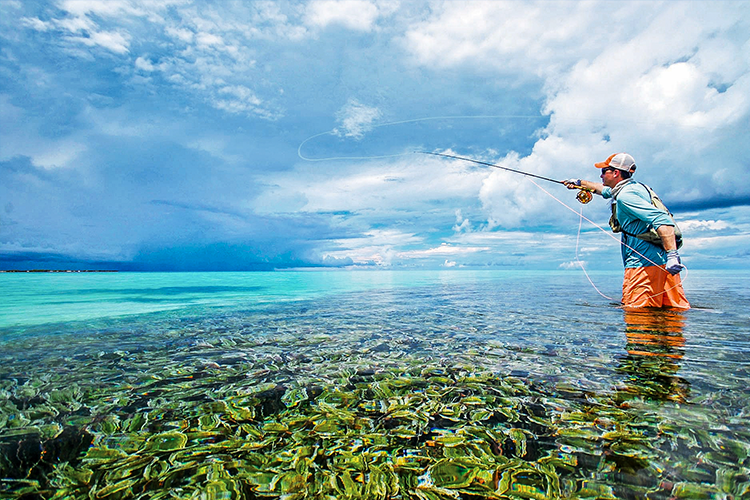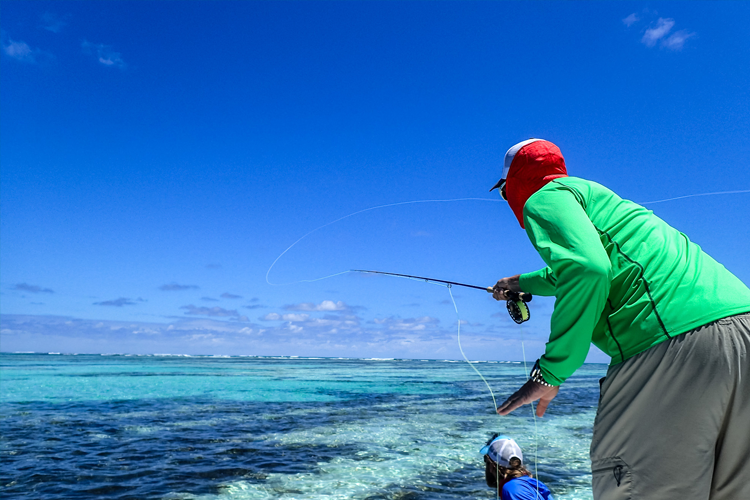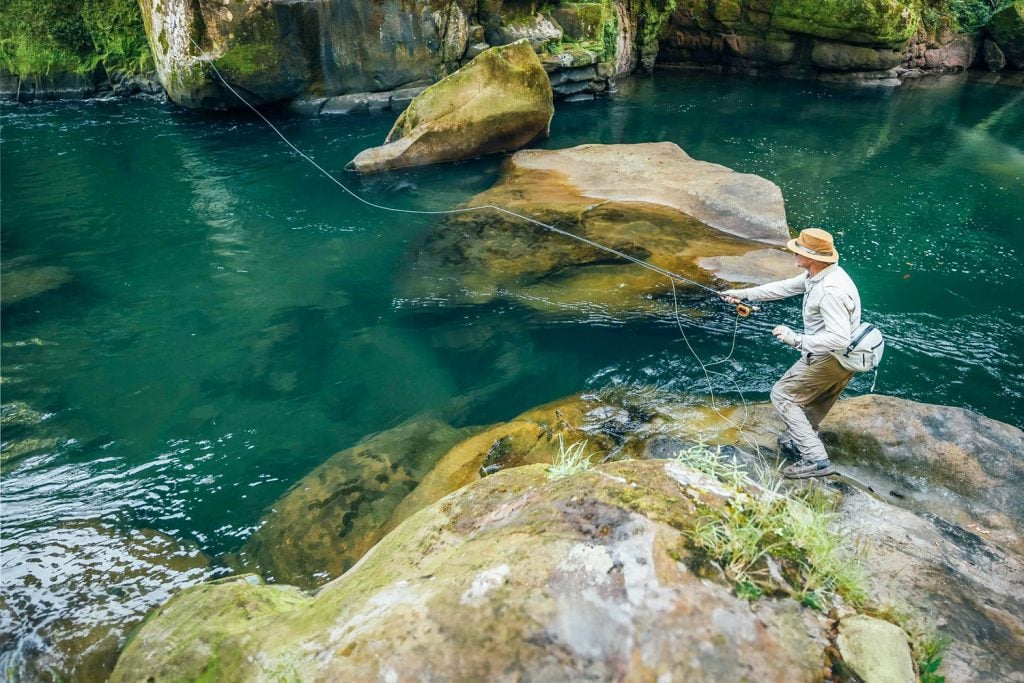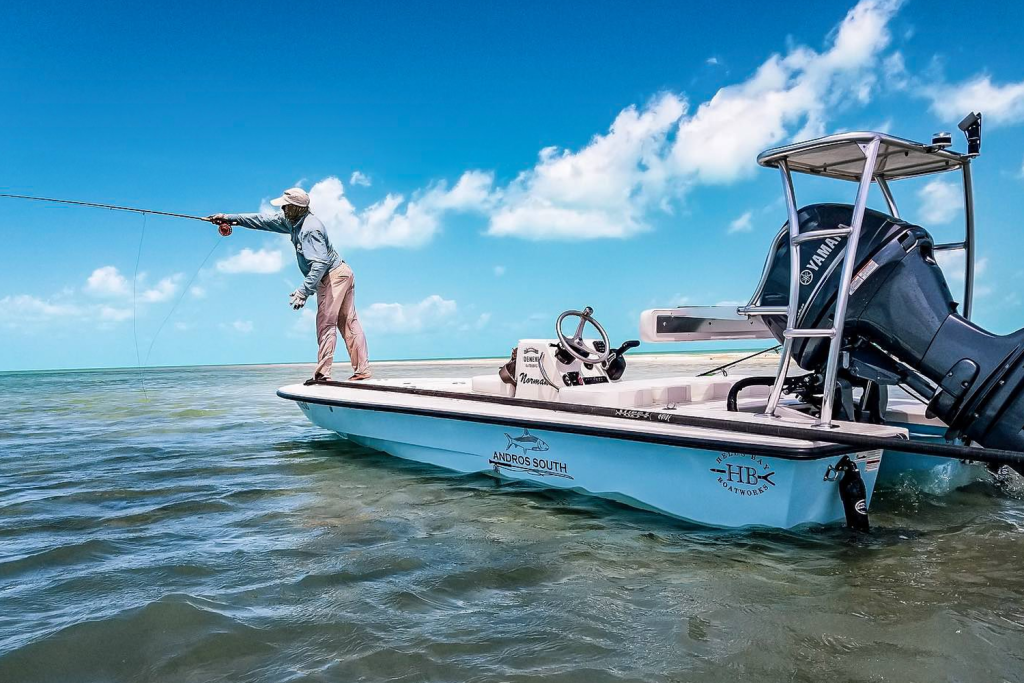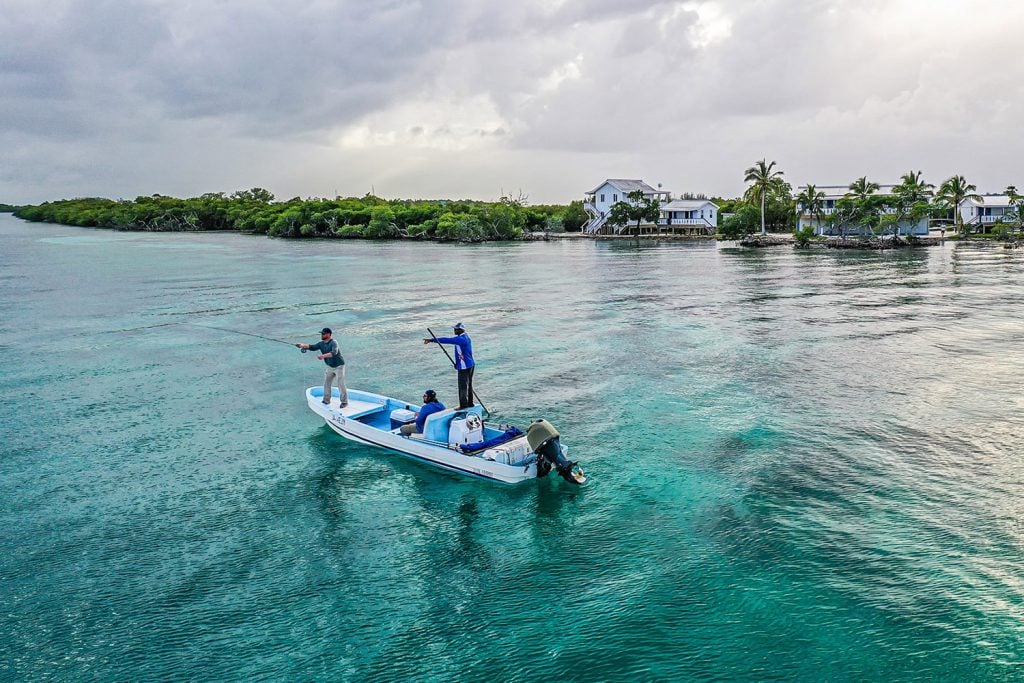There are several things to consider in regards to Saltwater flats fishing. Fish in this kind of water are particularly susceptible to spooking and any angler wishing to be successful when targeting these fish should try their utmost to prevent ‘the spook’.
The main way of fishing on the flats will be around using sight. Sight fishing has to rank amongst some of the most exhilarating ways to target fish within the sport. Every year thousands of anglers travel to far-flung parts of the world equipped with a fly rod and fly reels to spot and potentially set the hook in one of a vast array of different species like the people we all grew up reading about in a fishing magazine.
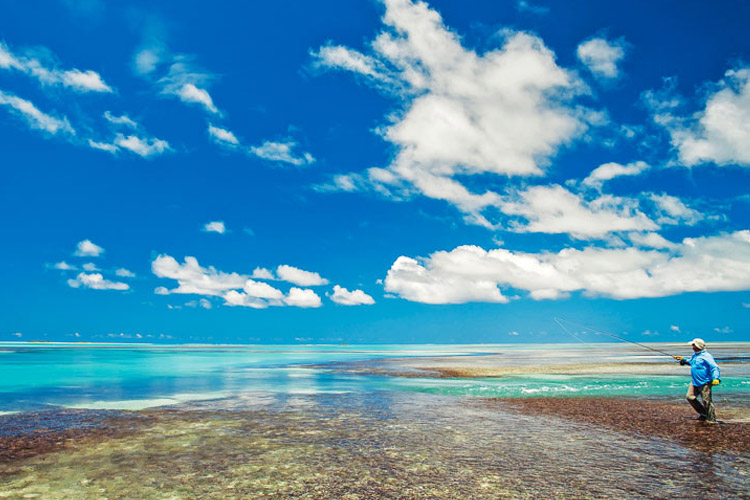

Making the most of a sight fishing trip can take practice and it is safe to say the more you have done of this type of fishing the better you will be at it. There are some tips and methods that can help newcomers hit the ground running as well as give those more experienced anglers something to think about.
Great fishing holidays that these tips would be most applicable for would-be places such as Oman, Mexico, Seychelles, Christmas Island as well as many more Caribbean based countries and the Indian ocean. You can watch our videos tackling these destinations here on our Youtube Channel.
Below we will be going through a range of tips and advice from our dedicated fly fishing experts, which, when put into practice, should improve your chances of landing more fishing when youre fishing.
Listen to your flats fishing guide
This is something that goes for all guided fishing. 95% of fishing guides will know more about the fish and the fishing in the destination that they are guiding you and when It comes to flats fishing this can be even more important. A good flats fishing guide will be able to take you to the best places to spot fish, have the ability to spot them and then help you to see the fish. From here, they will be able to get you into a good casting position instead of trying to get the fish near the rod tip. However, learning the skill of sight fishing as well will make the process a whole lot easier and will result in more hooked fish which we will discuss next.
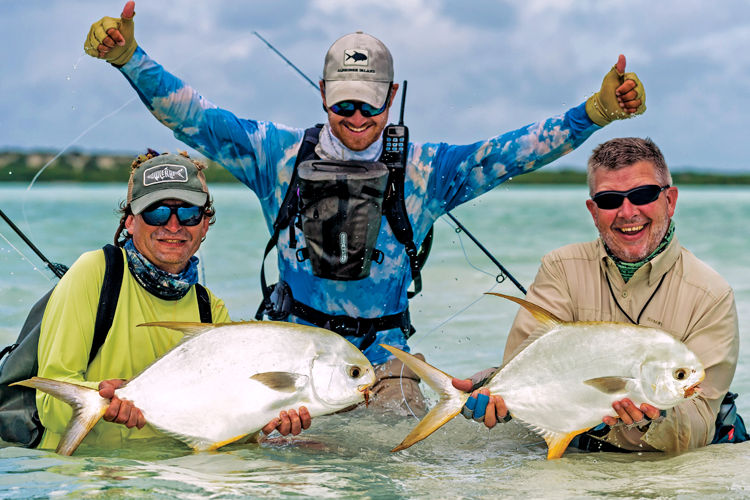

Learning to spot fish
Learning to spot fish is something that gets better with practice but there are a few tips that can help. Invest in a good pair of polaroid glasses as these will really help you cut through the glare on the water. Being able to concentrate on the water can be a massive help in spotting fish, if you look long and hard in likely looking spots often fish will give you the most subtle hint of where they are. The flicker of a fin on a tailing fish or the slight disturbance of sand can just be enough to give you a target.
Learning to cast when flats fishing
People tend to think about learning to cast further when thinking about casting lessons. Though the ability to cast further is very important when sight fishing, it is nowhere near as important as being able to cast accurately and without too much fuss.
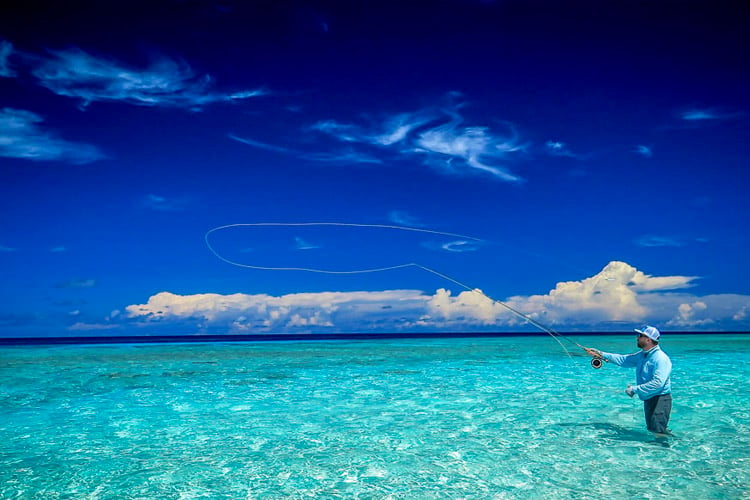

When you can spot fish you can normally devise a plan with your guide to get closer without spooking them but if your cast lands 20meters away or too close it could result in a missed chance. The other problem is if you add unnecessary false casts it can cause line flash that can lead to spooked fish. Casting instruction and practice is always a good thing to seek before trips and many of the different casting instruction organisations can be found at fishing shows or on the internet.
Below we will go through some tips we have for improving your casting in these situations.
1 – The Line
The type of line that you choose can make a huge difference to not spooking fish, a lot of saltwater fly lines are aggressively tapered to allow casting big heavy flies in strong winds but for many fishing situations these lines are not needed, these types of lines will actually make fly presentation tougher and can lead to spooked fish. When choosing your fly line try and look for lines that are coated in a dull coating that will cause less of a line flash than shiny ones. Some good lines that I would recommend for this kind of fishing would be
- Rio Direct Core Flats Pro
- Rio Tropical series Permit
- Hardy Tropical Flats Series
2 – Flies
When selecting flies for saltwater fishing try not to pick the biggest brightest flies in the box straight away, you should always pick flies for that species, so using a Bonefish fly when you’re hunting Bonefish ect. Very often when fishing clear, shallow water the more subtle approach is the way to go, the fish that live in these types of water are very aware of what is entering their home and if you can place your fly close to them without spooking them they will often investigate. Often slightly underdressed patterns in colours like off-white, tan, grey, chartreuse and light yellow can have a great effect.
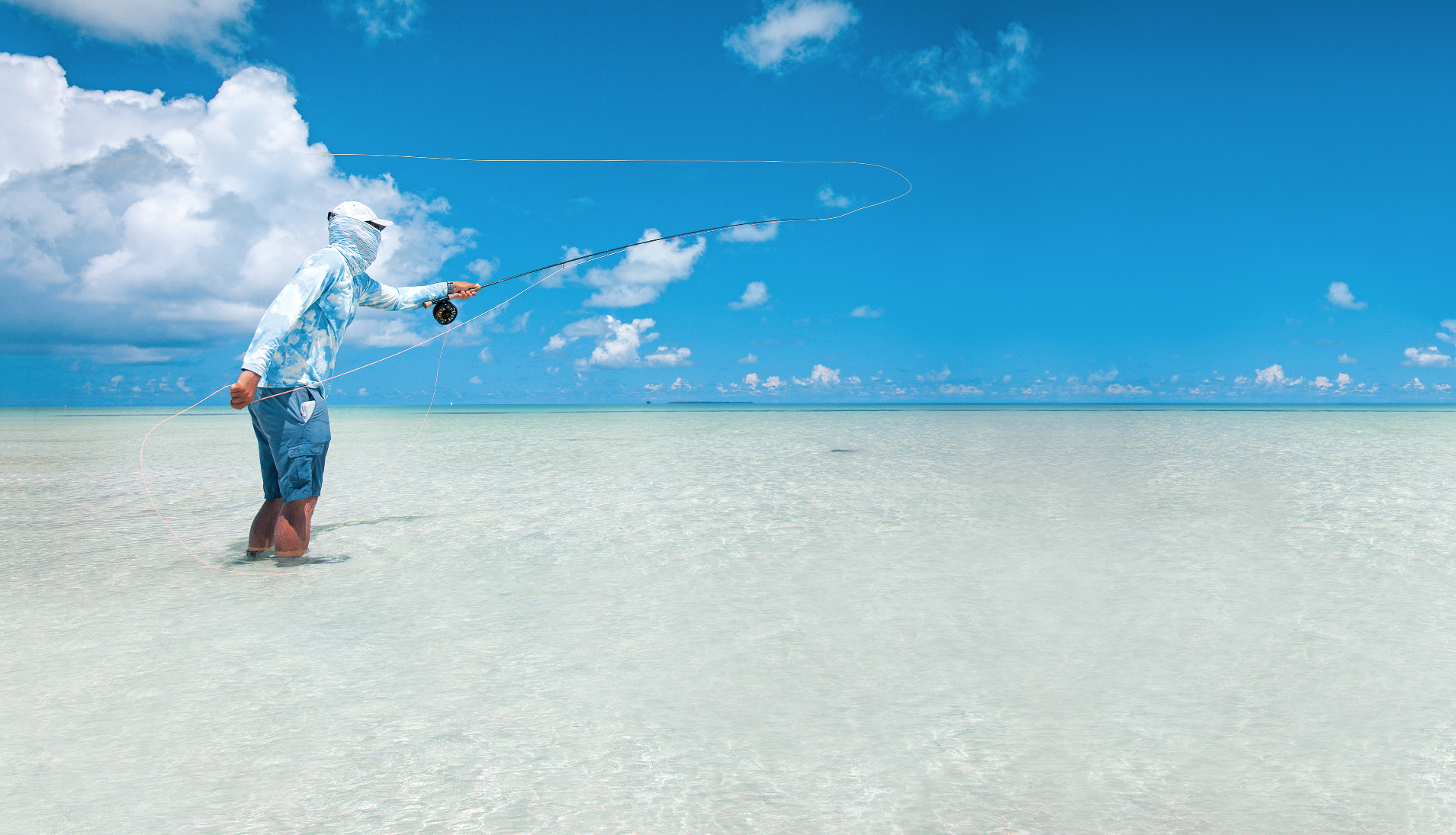

3 – The Cast
This is probably the single most common way that fly anglers spook fish, When we learn to cast we practice feeling the load of the cast in the fly rod and increasing line control with the false cast. This false cast often develops into a habit where anglers believe the more false cast they can put in the further the line is going to travel once released, something I like to call the “wind up clock method.”
4 – Cast Length
The length of your cast is an important factor when trying not to spook fish, the further away you can keep your fly away from your fly line the better but it needs to be short enough to enable you to put some distance and accuracy on your cast. Fluorocarbon has led the way in tippet/cast material in recent years mainly due to its invisible properties but be warned, if fishing very tiny floating flies, fluorocarbon can affect its presentation as it sinks in the water.
Tips for casting when the flats are windy
One topic often discussed among our guests is dealing with the wind and for a good reason – it is tough! With practice and understanding of a few techniques and principles, it is possible to land your fly under the worst circumstances.
Tight Loops and High Line Speed
Tight loops and high line speed are two of the most important principles when casting into the wind.
Attempting to shoot line into the wind when casting into a heavy headwind is not the best idea. The instant you let go of your line to shoot, your rod unloads and is at the mercy of the wind. You may have noticed this as you make your final cast – your line lands in a pile as it is knocked down by the wind.
On the other hand, staying connected to the rod (not shooting line), allows the rod to remain loaded all the way through the casting stroke, thus allowing the fly to turn over.
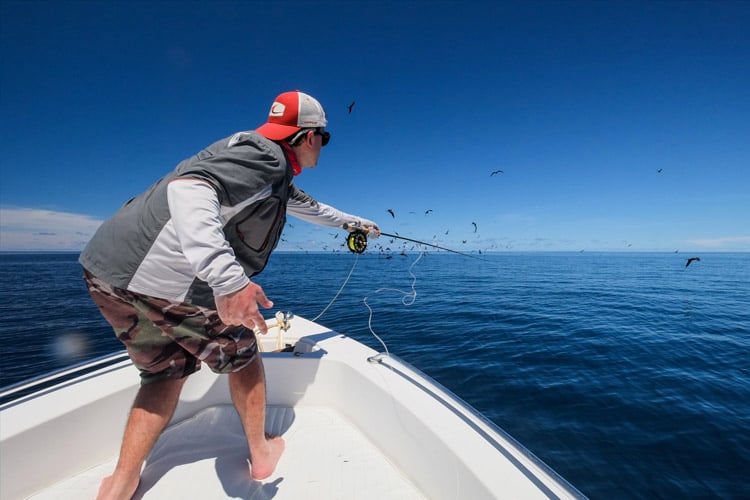

Do Shoot Line on Your Backcast
When casting directly upwind, it can be difficult to increase the length of your line needed to reach the fish. However, you can use the wind to your advantage by shooting line on your backcast instead. Shoot line on your back cast until you reach your desired amount of line and present the forward cast without shooting line.
Know Your Fly Line
A simple tip that will aid in any casting situation, especially in the wind, is to understand the taper of your fly line. Most fly lines used today are of the weight-forward variety, but the taper itself differs greatly between different line series. Understanding how long the head (heavy forward section) of the fly line allows you to know how much lines you can carry in the air with control. Luckily the head and running line of most fly lines nowadays are coloured to indicate the separation between the two.
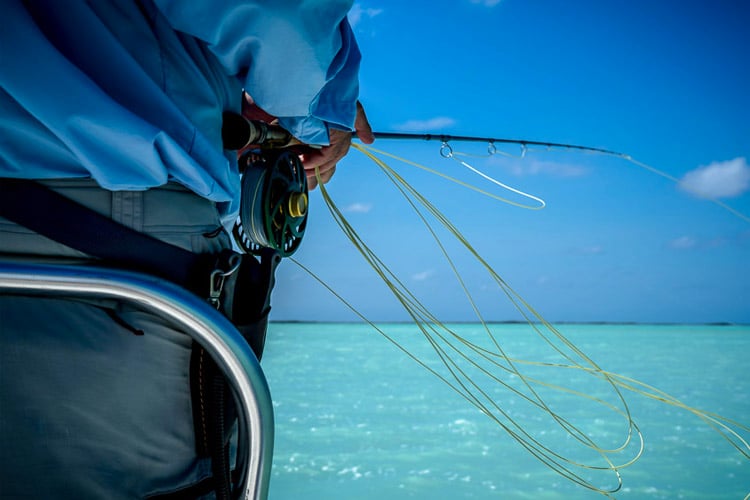

The Belgian Cast
What if the wind is not blowing directly at you? The Belgian Cast is the best option for getting the fly in the zone and not in your head. Simply make your backcast from the side and low to the water and your forward cast over your head in traditional fashion. Changing planes between the backcast and forward cast keeps the fly away from you and is especially useful when the wind is blowing onto your casting side.
Knowing the fish of the flats
Although in most cases your guide will know the ins and outs of the fish species they guide for, it doesn’t hurt for you to research and study the behaviours of what you intend to catch. This will allow you to spot fish more easily as you will know where to look. Also, you will start to learn the body language of fish and how best to approach them with regards to stalking and cast placement.
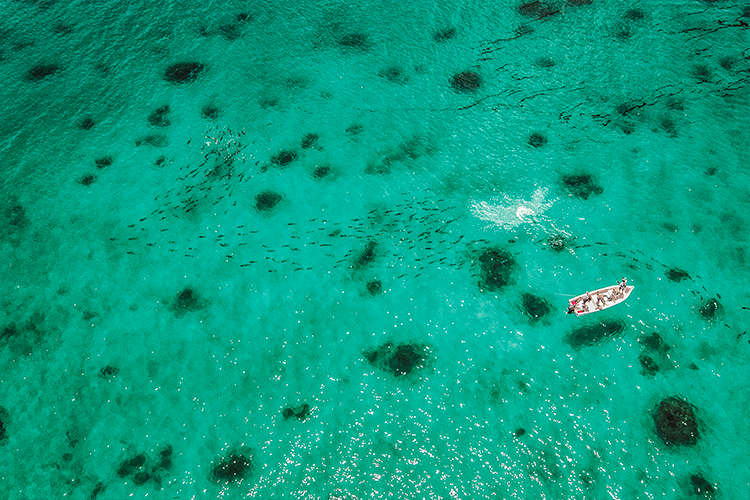

Understanding how to approach fish when flats fishing
Once a fish is spotted, being able to approach a fish without detection is most important as this is a really good opportunity to convert this ‘shot’ into a hooked fish. Think about using the sun to your advantage by not putting it directly into your eyes but also not casting a shadow on your intended fish. Sound and vibration also is something that you want to try to avoid, so don’t shout to your guide and try to move stealthily as you stalk in closer for your cast. If you are fishing from a boat try not to bang the side of the hull or drop anything as you approach you casting spot.
Although a large part of sight fishing does come down to the ability of your guide, remember you are working as a team to help you catch more fish. The better you can become at the skills above the easier it will be for you and your guide to put you onto targets and convert them into landed fish which is enjoyable for all involved.
Contact us
Do you have any other tips on flats fishing? If so leave them in the comments below.
Do you have any other questions on flats fishing or any of our Saltwater fly fishing destinations, please feel free to contact us on 01603 407596 and our experienced team will be happy to help.
Tight lines,
Peter
